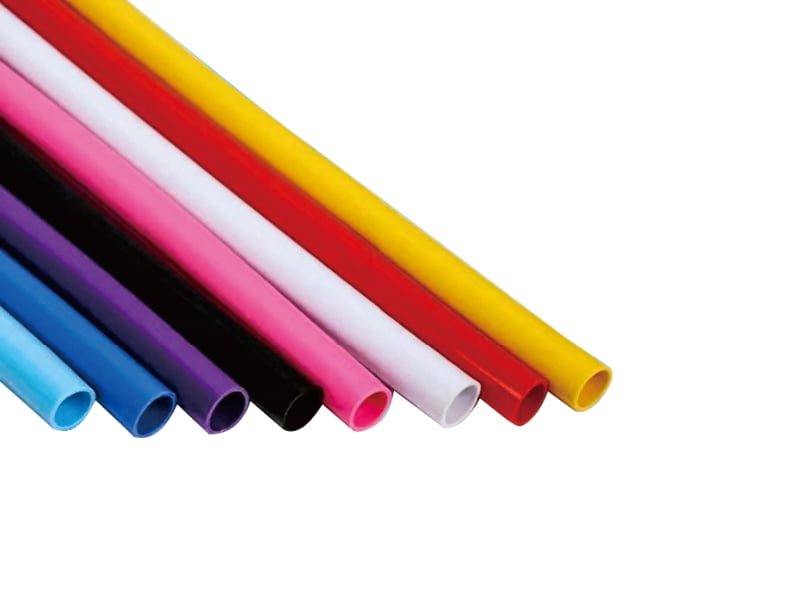What is PVC Pipe?
Polyvinyl Chloride (PVC) pipe is a versatile thermoplastic material widely used in construction and plumbing applications. PVC Pipes are manufactured through an extrusion process that creates hollow cylindrical tubes with precise dimensions. The material consists of 57% chlorine (derived from industrial grade salt) and 43% carbon (from ethylene, derived from hydrocarbons). This unique composition gives PVC Pipes their distinctive properties while making them more environmentally friendly than metal alternatives due to lower energy requirements in production.
Pvc Pipes are classified by two main standards: Schedule 40 (for standard pressure applications) and Schedule 80 (for higher pressure applications). The nominal pipe sizes range from ½ inch (15mm) to 24 inches (600mm) in diameter, with larger sizes available for specialized applications.

Key Characteristics of PVC Pipes
1. Chemical Resistance
PVC pipes demonstrate exceptional resistance to a wide range of chemicals with a pH resistance range of 2-12. They can withstand exposure to acids, alkalis, salts, and many organic compounds without significant degradation. This makes them ideal for industrial applications where chemical transport is required.
2. Mechanical Strength
Despite being lightweight, PVC pipes offer impressive mechanical properties:
Tensile strength: 50-80 MPa
Flexural strength: 80-120 MPa
Impact strength (Izod): 2-5 kJ/m²
Modulus of elasticity: 2,500-4,000 MPa
3. Thermal Properties
PVC pipes have a thermal conductivity of 0.14-0.17 W/m·K, which is about 1/300th that of steel pipes. Their maximum continuous service temperature is 60°C (140°F), with a heat deflection temperature of 70-80°C (158-176°F) at 1.82 MPa.
4. Hydraulic Characteristics
The smooth interior surface of PVC pipes results in a Hazen-Williams C-factor of 150-155, compared to 100-120 for aged metal pipes. This translates to significantly lower friction losses and improved flow capacity over time.
5. Durability and Longevity
Properly installed PVC piping systems have an expected service life of 50-100 years with minimal maintenance. Accelerated aging tests predict a lifespan exceeding 100 years for buried applications when properly installed.
Applications of PVC Pipes
1. Water Supply Systems
PVC pipes account for approximately 66% of all water distribution piping in North America. They are used for:
Municipal water mains (typically 4-24 inches in diameter)
Residential water service lines (¾-2 inches)
Irrigation systems
Water treatment plant piping
2. Drainage and Sewer Systems
PVC dominates the drainage market with:
Building drain, waste, and vent (DWV) systems
Stormwater drainage systems
Sewer force mains
Gravity sewer systems (typically 4-15 inches)
3. Industrial Applications
Special formulations of PVC are used for:
Chemical processing plants (CPVC for higher temperature resistance)
Electroplating and metal finishing facilities
Wastewater treatment plants
Power plant cooling water systems
4. Electrical Conduit
PVC electrical conduit accounts for about 75% of all conduit installations due to:
Excellent dielectric strength (40-50 kV/mm)
Flame retardant properties (UL94 V-0 rating)
Corrosion resistance in underground applications
5. Specialty Applications
Unique uses include:
Geothermal heat pump ground loops
Aquaculture systems
Radon mitigation systems
Foundation drainage systems
PVC Pipe Maintenance Guidelines
1. Installation Best Practices
Proper installation ensures long-term performance:
Maintain proper bedding with 4-6 inches of compacted granular material beneath the pipe
Use appropriate jointing methods (solvent cement for pressure applications, gaskets for non-pressure)
Allow for thermal expansion (3.0 x 10^-5 in/in/°F expansion coefficient)
Follow proper curing times for solvent cement joints (15 minutes to 24 hours depending on pipe size and temperature)
2. Routine Inspection
Implement a regular inspection schedule:
| Component | Inspection Frequency | Key Checkpoints |
|---|---|---|
| Above-ground piping | Quarterly | UV degradation, mechanical damage, support integrity |
| Buried piping | Annually | Joint integrity, settlement, corrosion (in aggressive soils) |
| Pressure systems | Biannually | Leak detection, pressure testing, valve operation |
3. Cleaning Procedures
For maintaining optimal flow capacity:
Mechanical cleaning: Use flexible cleaning tools for diameters ≥2 inches
Hydrojetting: Recommended pressure ≤2000 psi at 5-10 gpm
Chemical cleaning: Use only cleaners specifically formulated for PVC (pH 4-9)
4. Repair Techniques
Common repair methods include:
Solvent welding for small leaks (effective on pipes ≤6 inches)
Fiberglass repair wraps for larger diameter pipes
Full-section replacement for severely damaged sections
Mechanical couplings for emergency repairs
5. UV Protection
For exposed PVC pipes:
Apply UV-resistant paint (reflectivity ≥80%)
Use pipe wraps with UV stabilizers
Consider schedule 80 pipe for critical exposed applications (wall thickness 25-50% greater than schedule 40)




 English
English

